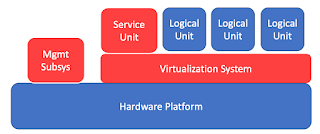Total Lab Automation Market – Overview On Demanding Applications 2035
Total Lab Automation Market: Market Overview
The Total Lab Automation (TLA) market is witnessing a rapid transformation, driven by advancements in technology, growing demand for high-throughput testing, and the need for greater efficiency in laboratories. Total lab automation involves the integration of laboratory instruments, software, and processes to streamline workflows, reduce manual intervention, and enhance accuracy and reproducibility. This market is expected to grow significantly due to the increasing adoption of automated solutions in clinical laboratories, research institutions, and pharmaceutical industries.
As laboratories continue to face pressure to deliver faster and more reliable results while managing rising workloads, TLA solutions offer an effective approach to optimizing lab operations. These systems minimize human errors, improve sample processing speeds, and enable real-time data monitoring, making them essential in modern diagnostic and research environments.
Request To Free Sample of This Strategic Report - https://www.marketresearchfuture.com/sample_request/43772
Key Market Segments
The Total Lab Automation market can be segmented based on the following criteria:
1. By Component
Hardware
Robotic Sample Handlers
Automated Storage & Retrieval Systems
Automated Analyzers
Conveyors & Transport Systems
Software
Laboratory Information Management System (LIMS)
Data Analytics & AI Integration
Services
Installation & Integration
Maintenance & Support
2. By Application
Clinical Diagnostics
Drug Discovery & Development
Genomics & Proteomics Research
Microbiology & Pathology
Other Research Applications
3. By End-User
Hospitals & Diagnostic Laboratories
Pharmaceutical & Biotechnology Companies
Research & Academic Institutes
Contract Research Organizations (CROs)
4. By Region
North America
Europe
Asia-Pacific
Latin America
Middle East & Africa
Industry Latest News
1. Technological Advancements
AI and machine learning are being integrated into lab automation systems to enhance data analysis, predictive maintenance, and process optimization.
The development of next-generation automated analyzers is improving efficiency in high-throughput laboratories.
2. Mergers & Acquisitions
Leading companies are acquiring startups and smaller automation firms to expand their technological capabilities and market presence.
Recent mergers have focused on enhancing interoperability between different lab automation solutions.
3. Regulatory Updates
Regulatory bodies such as the FDA and European Medicines Agency (EMA) are setting new standards for automated lab systems, ensuring accuracy and compliance.
Data integrity and cybersecurity have become critical concerns, prompting stringent regulations on laboratory information systems.
4. Market Expansion
The Asia-Pacific region is experiencing increased investments in healthcare and research, driving the demand for lab automation.
Companies are launching cloud-based lab automation solutions to enable remote monitoring and data sharing.
Key Companies
The Total Lab Automation market is dominated by several key players, including:
1. Siemens Healthineers
Offers a wide range of automation solutions for clinical diagnostics and laboratory workflows.
2. Beckman Coulter (Danaher Corporation)
Specializes in automated laboratory instruments and software to improve operational efficiency.
3. Thermo Fisher Scientific
Provides integrated lab automation solutions for drug discovery, genomics, and proteomics.
4. Roche Diagnostics
Focuses on fully automated clinical laboratory solutions, including advanced analytics.
5. Abbott Laboratories
Develops innovative automation solutions for diagnostic labs to enhance test accuracy and speed.
6. Tecan Group Ltd.
A leading provider of liquid handling and robotic automation systems for life sciences and diagnostics.
7. BD (Becton, Dickinson and Company)
Provides automation solutions for microbiology and clinical diagnostics.
Market Drivers
1. Increasing Demand for High-Throughput Testing
Growing disease burden and an aging population have led to increased diagnostic testing, necessitating efficient lab automation.
2. Shortage of Skilled Lab Technicians
Automation helps mitigate workforce shortages by reducing the dependency on manual interventions.
3. Advancements in AI and Robotics
AI-powered automation systems enhance accuracy, reduce errors, and optimize workflows.
4. Growing Adoption of Personalized Medicine
Automated lab solutions support precision medicine by enabling high-throughput genomic and proteomic analysis.
5. Stringent Regulatory Compliance
Compliance requirements for accuracy and data integrity are pushing laboratories to adopt automation solutions.
Browse In-depth Market Research Report - https://www.marketresearchfuture.com/reports/total-lab-automation-market-43772
Regional Insights
North America
The largest market for Total Lab Automation, driven by well-established healthcare infrastructure, high adoption of advanced technologies, and presence of major industry players.
The U.S. leads in lab automation adoption, with continuous investments in AI-driven laboratory systems.
Europe
Strong focus on research and diagnostics, supported by government funding for healthcare automation.
Countries such as Germany, the U.K., and France are key contributors to the market growth.
Asia-Pacific
Fastest-growing region due to rising healthcare investments, increasing prevalence of chronic diseases, and growing adoption of automation in pharmaceutical research.
China, Japan, and India are emerging as significant markets for lab automation technologies.
Latin America
Growth in healthcare infrastructure and rising demand for diagnostic services are driving market expansion.
Brazil and Mexico are leading markets for lab automation in the region.
Middle East & Africa
Gradual adoption of lab automation due to improving healthcare facilities and increasing government initiatives.
The UAE and Saudi Arabia are witnessing investments in automated lab technologies.
Conclusion
The Total Lab Automation market is poised for significant growth, driven by technological advancements, increasing demand for efficient laboratory workflows, and the need for regulatory compliance. With key players innovating and expanding their presence across different regions, the market is expected to witness continuous evolution. North America and Europe remain dominant markets, while Asia-Pacific presents lucrative growth opportunities. As AI, robotics, and cloud technologies continue to integrate with lab automation systems, the future of laboratory operations will become more efficient, precise, and data-driven.

Comments
Post a Comment